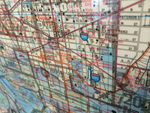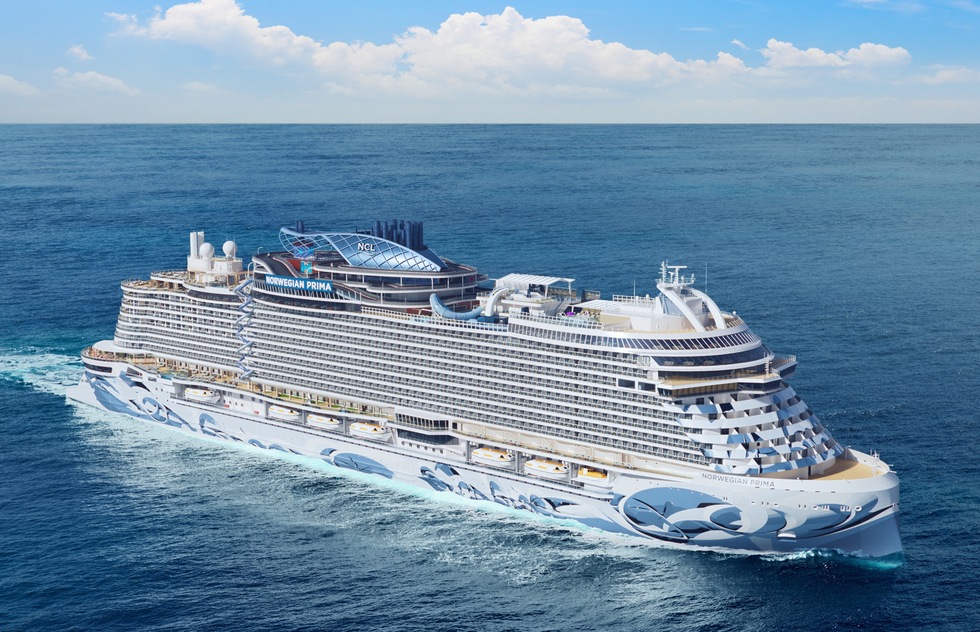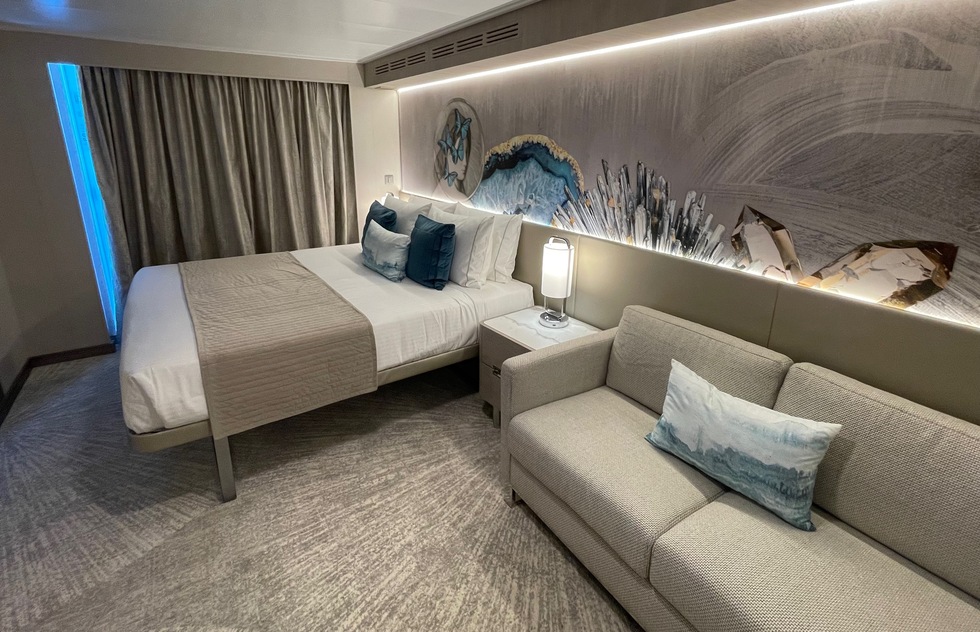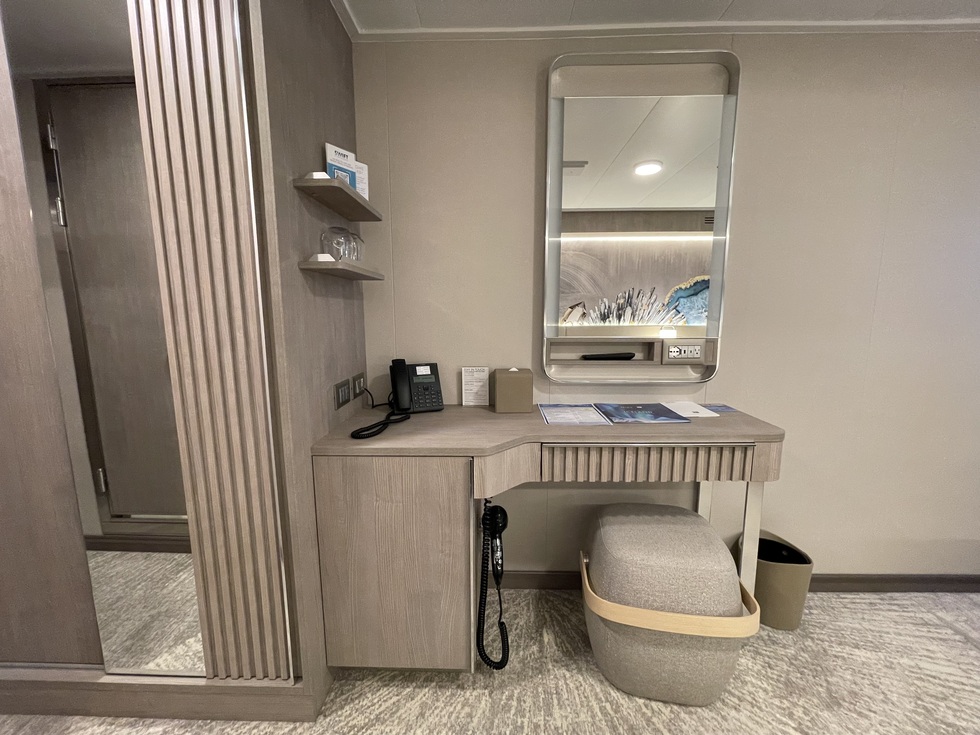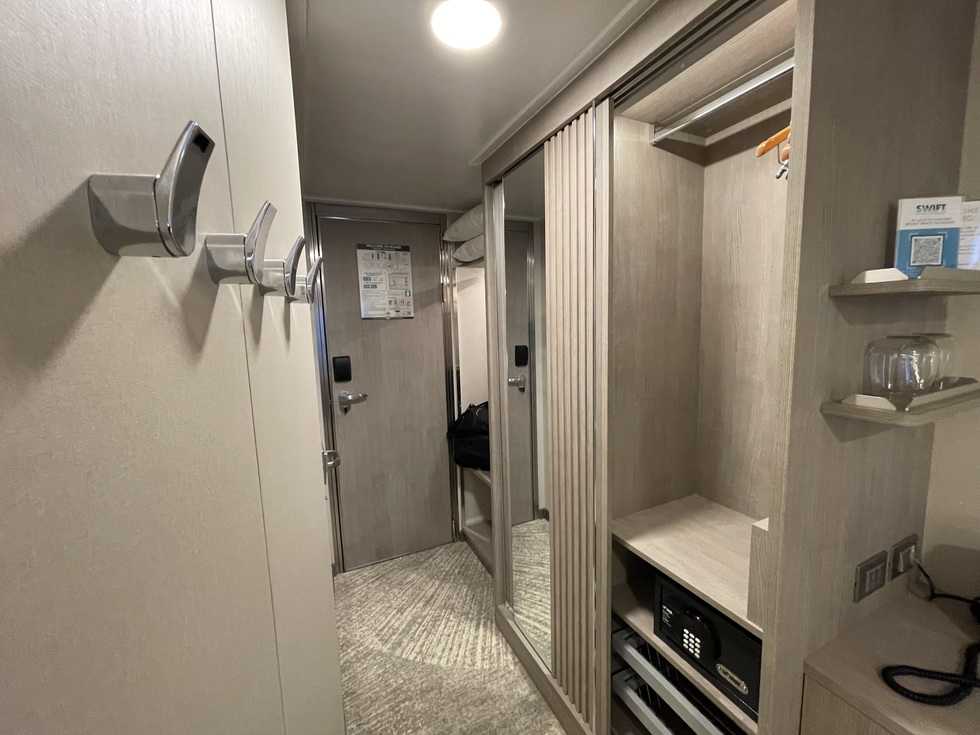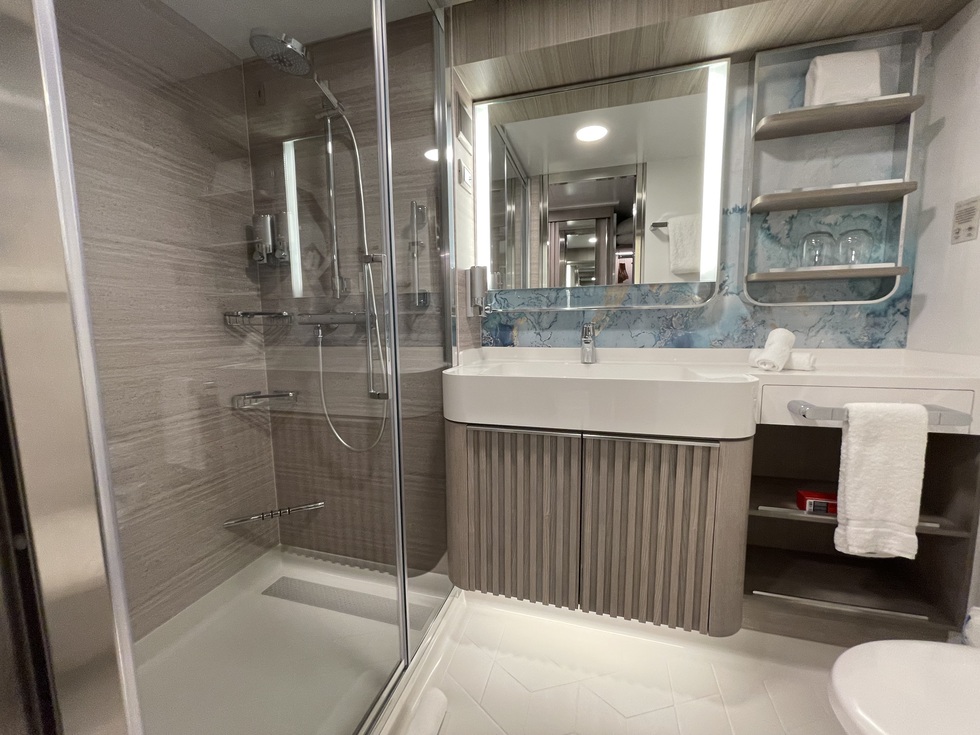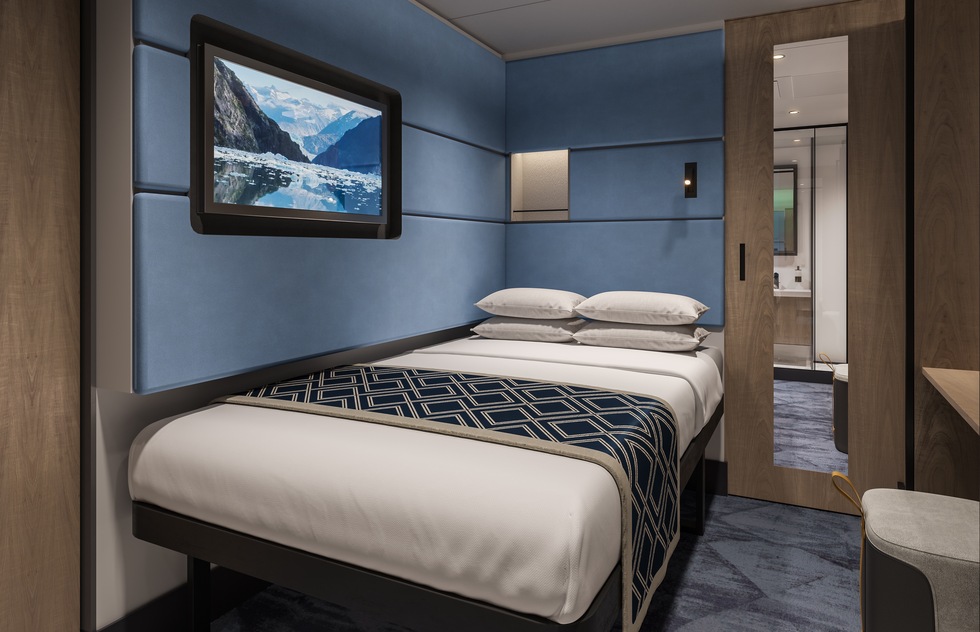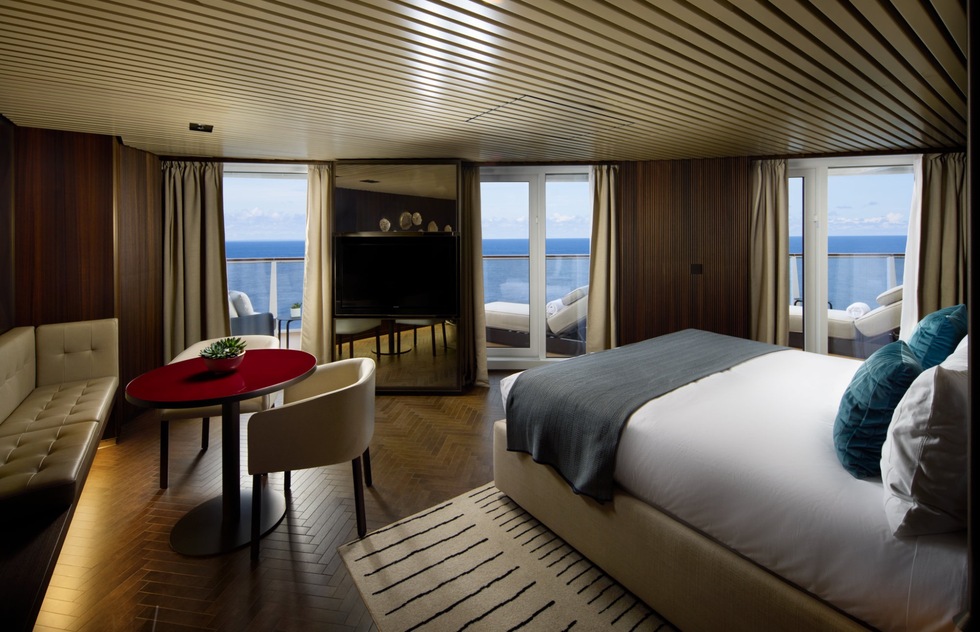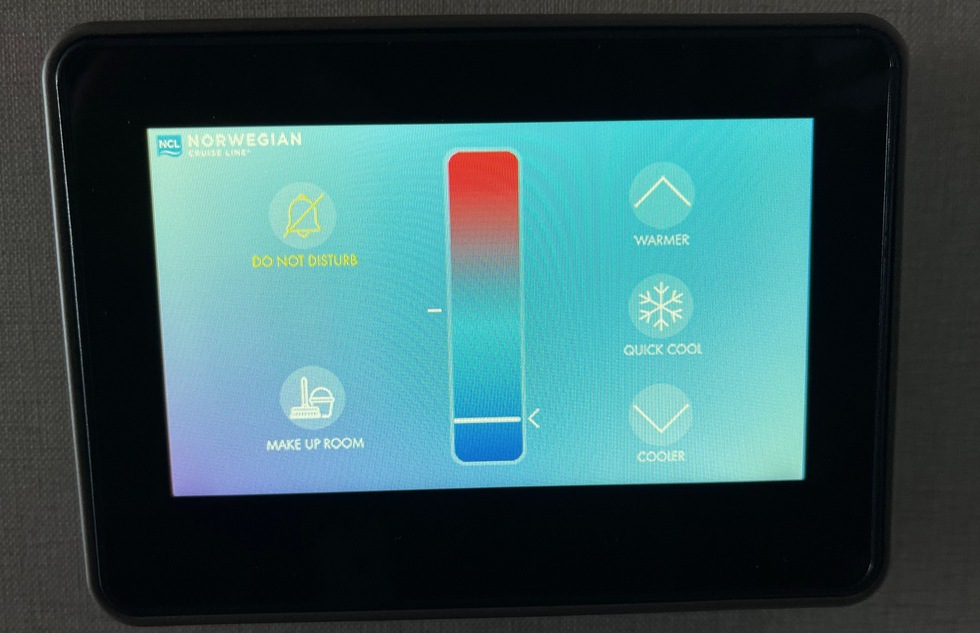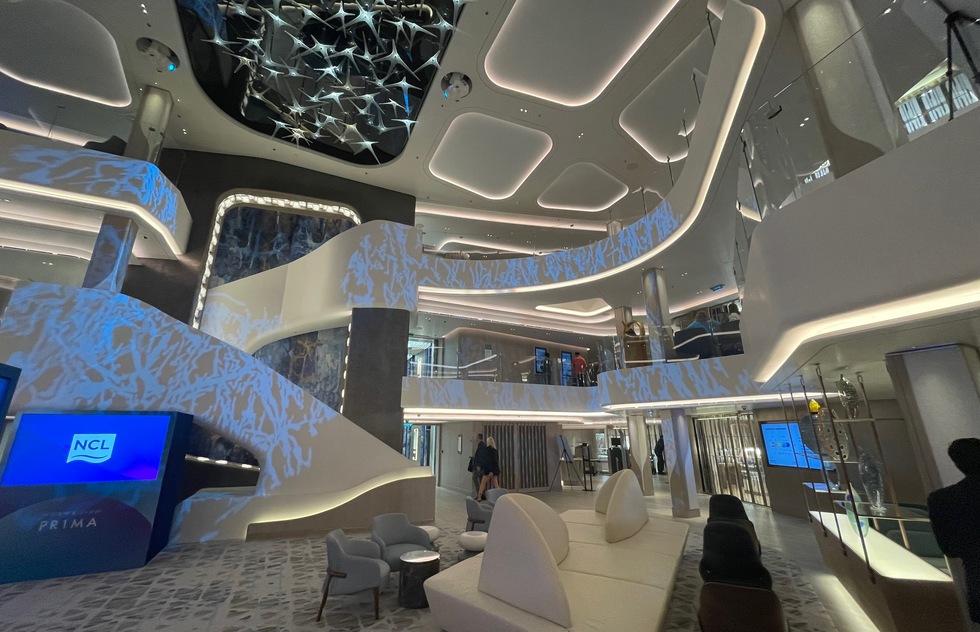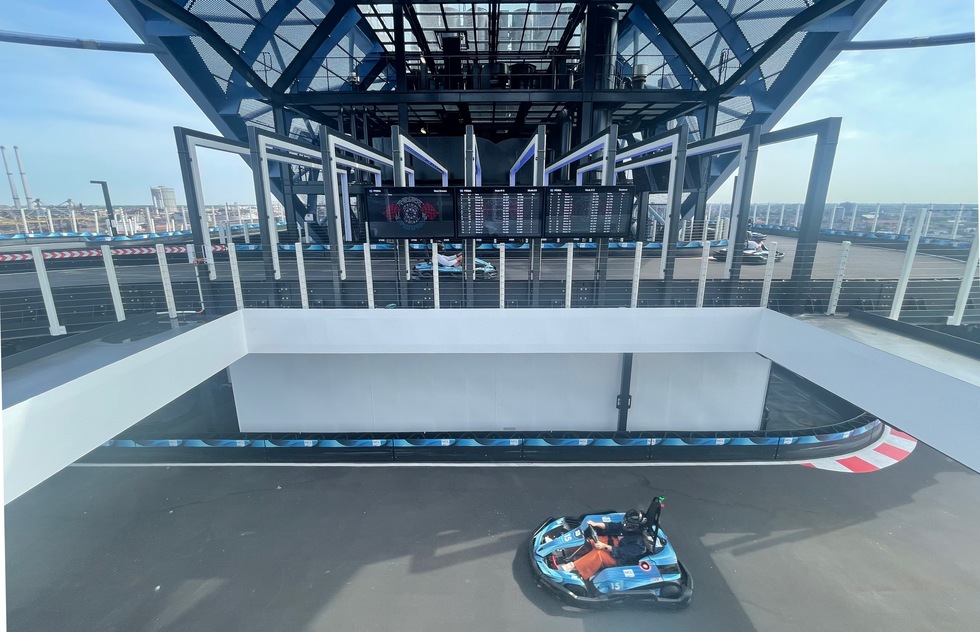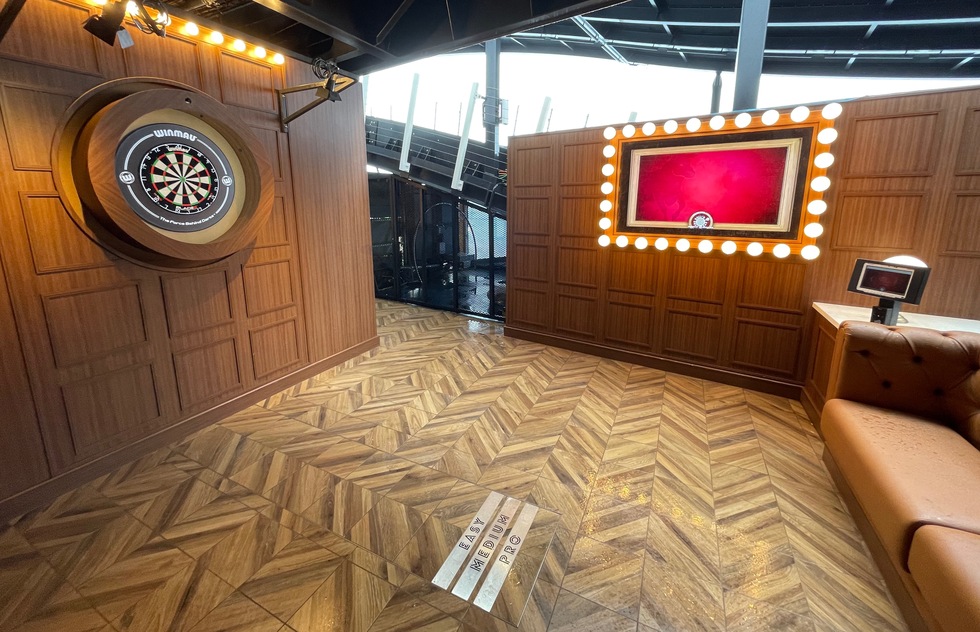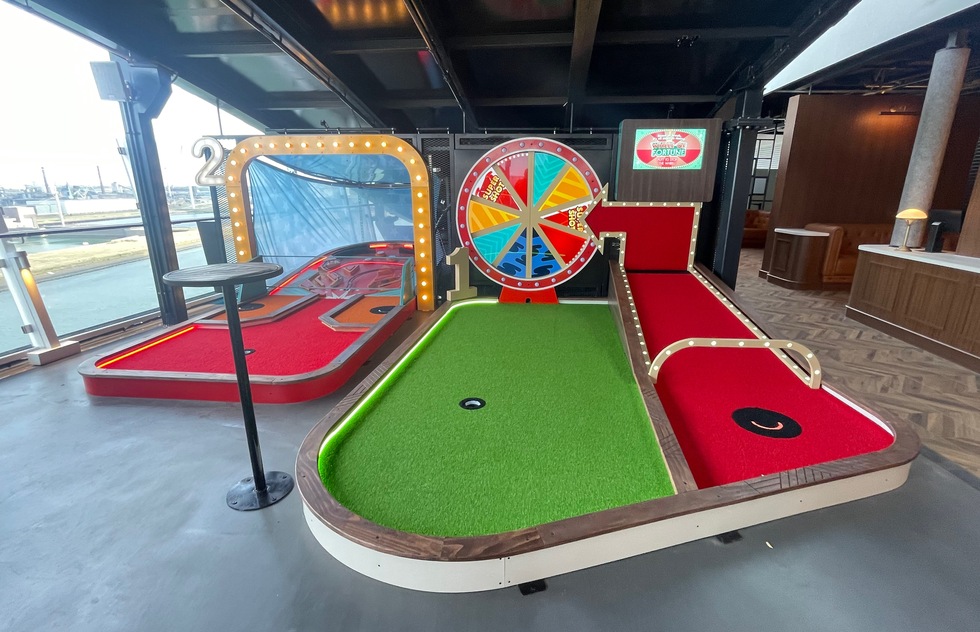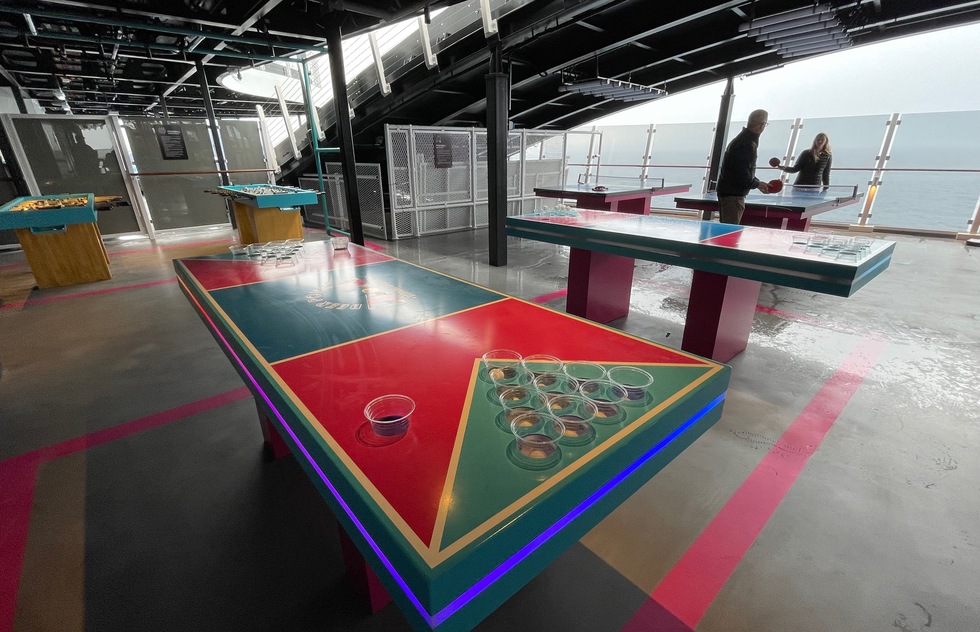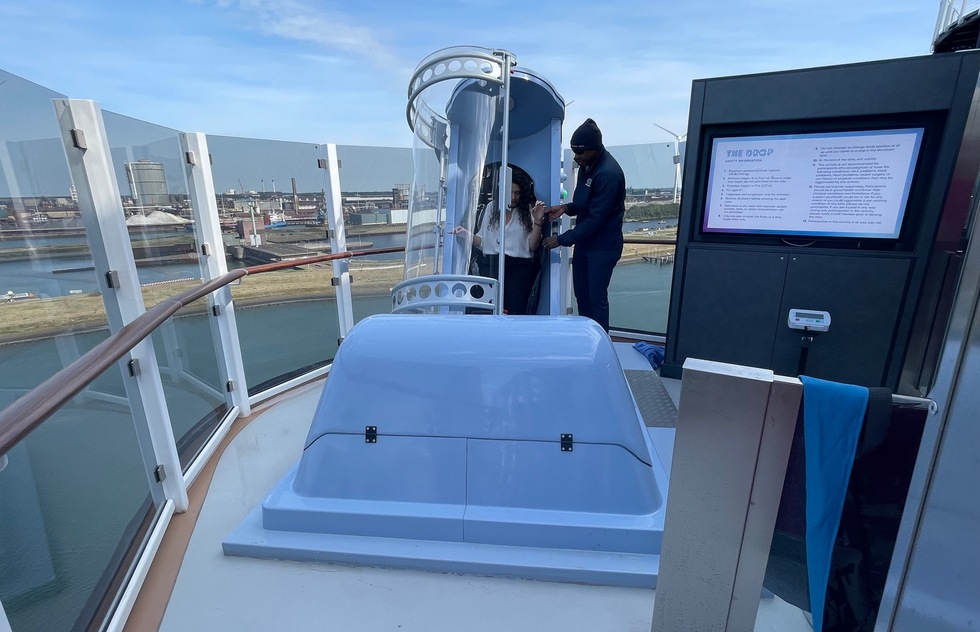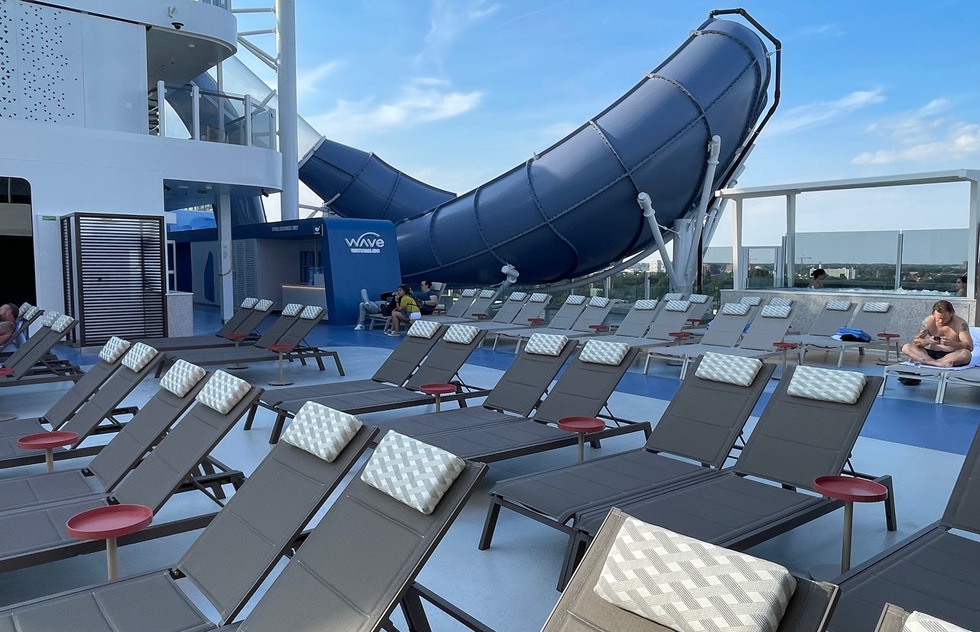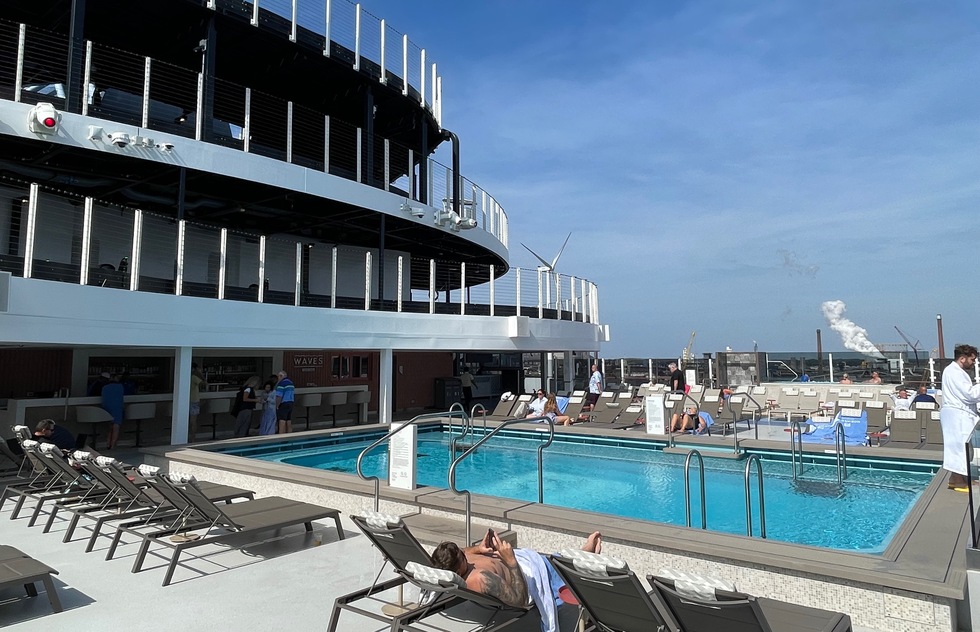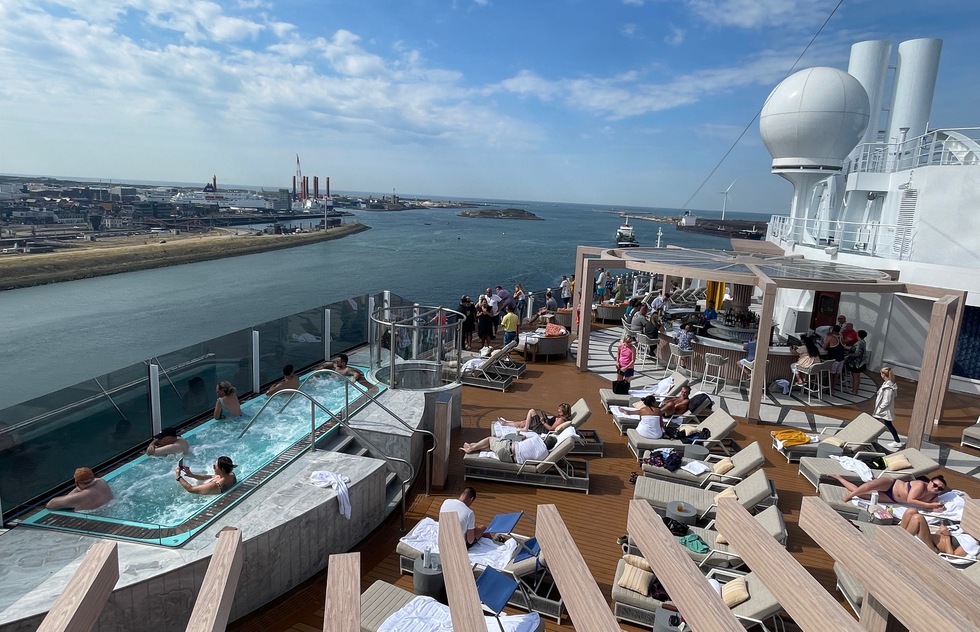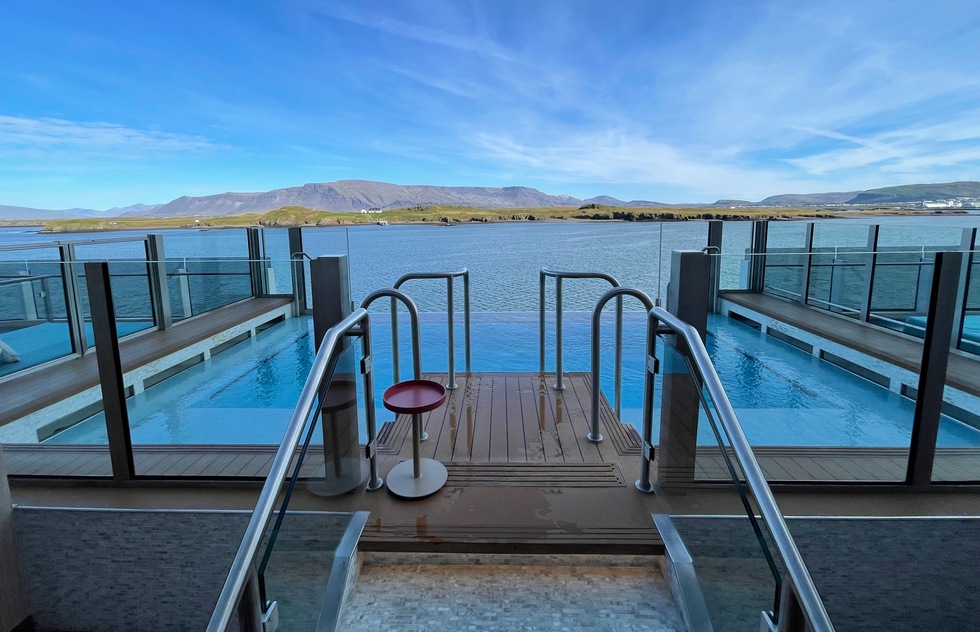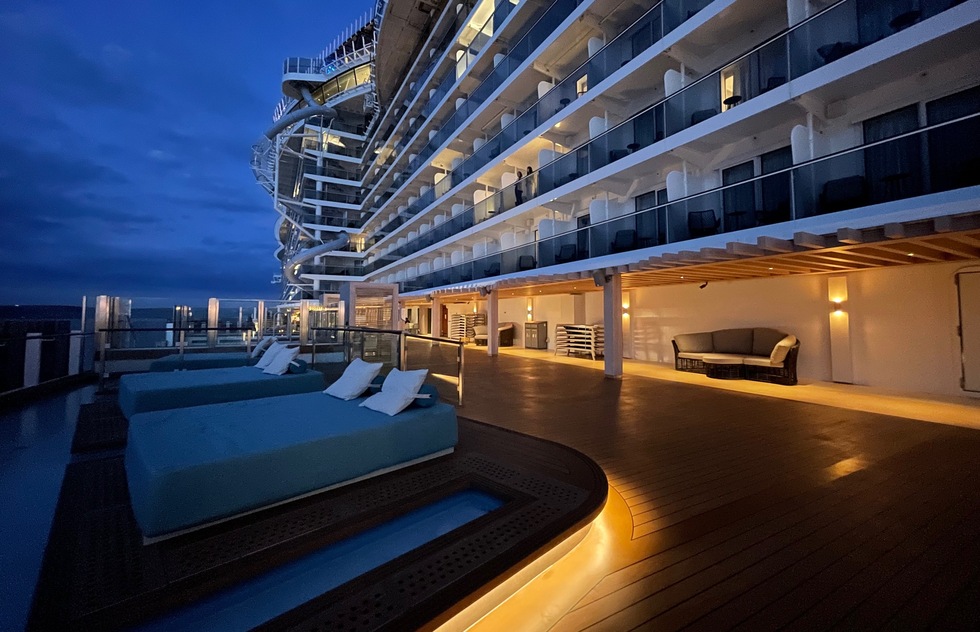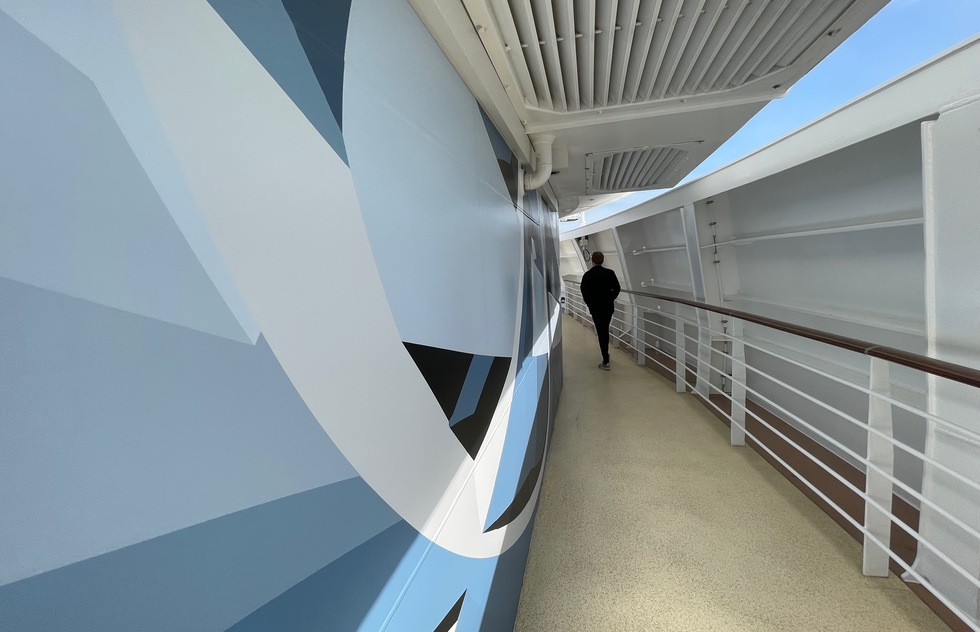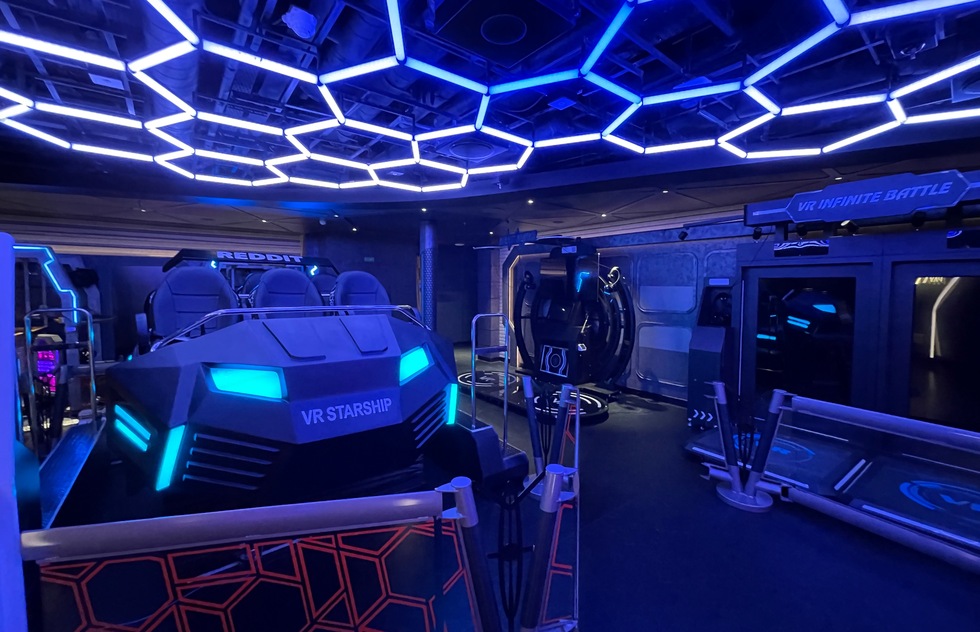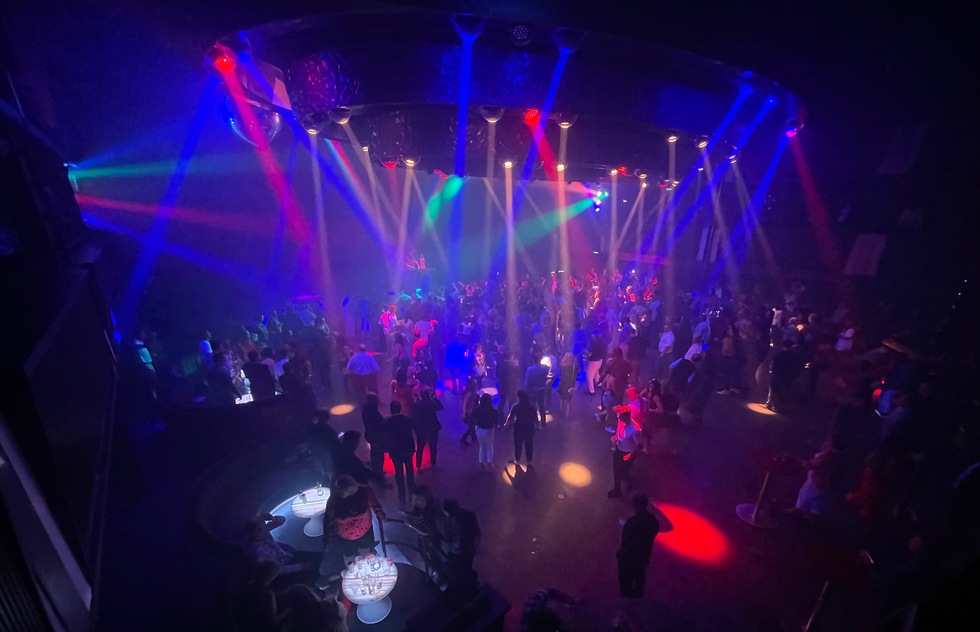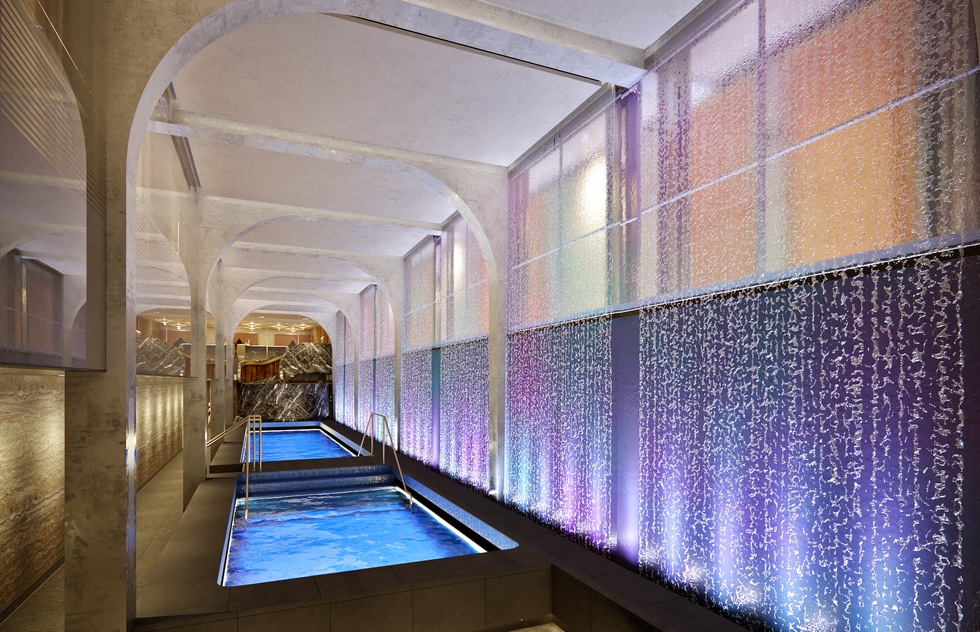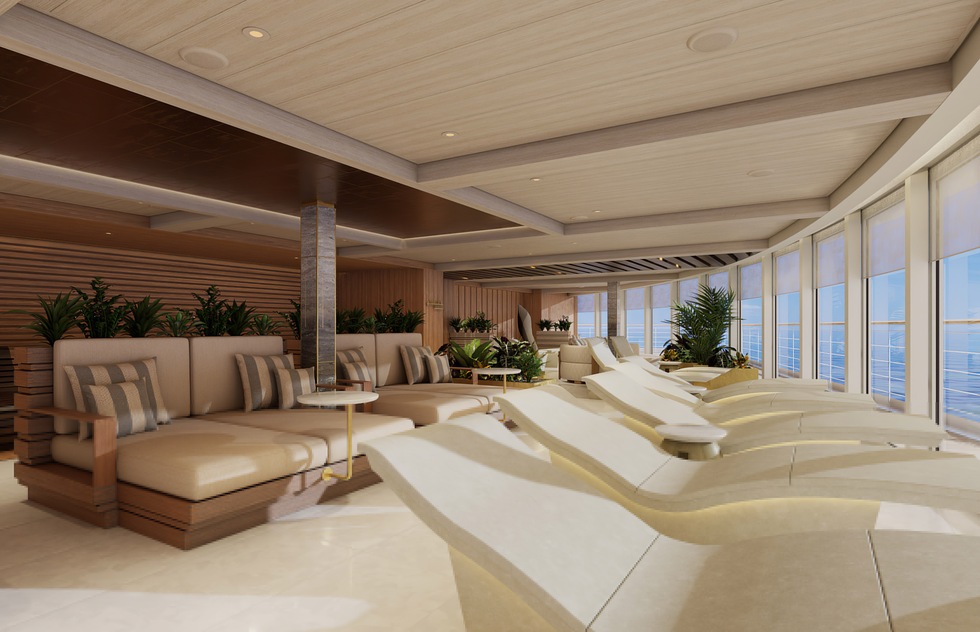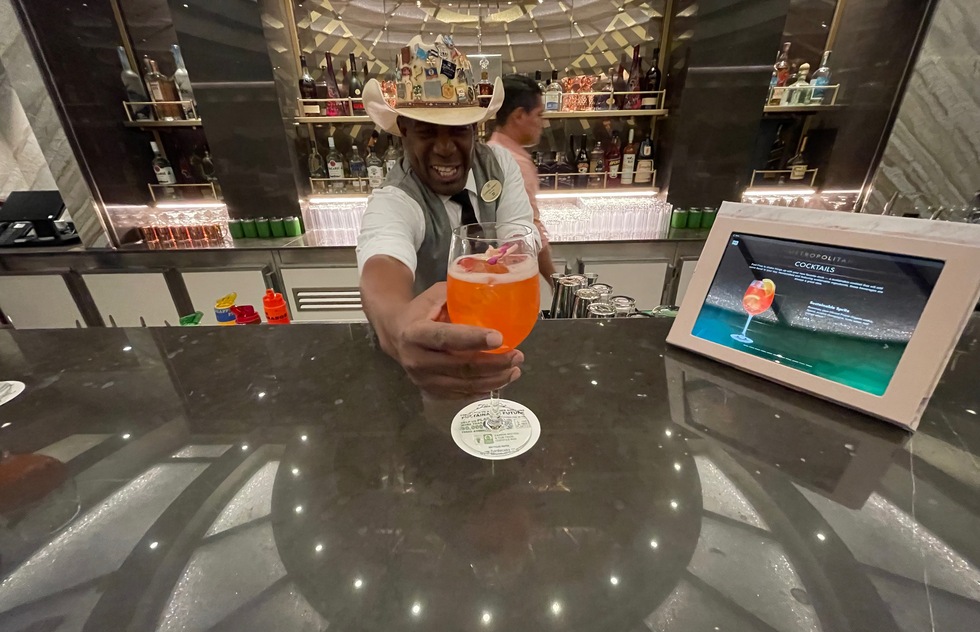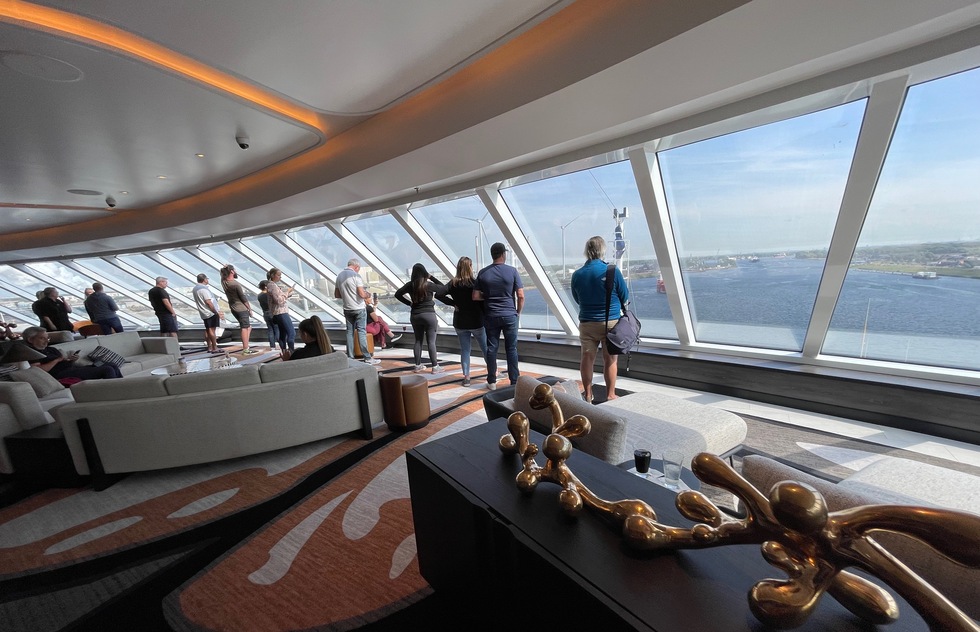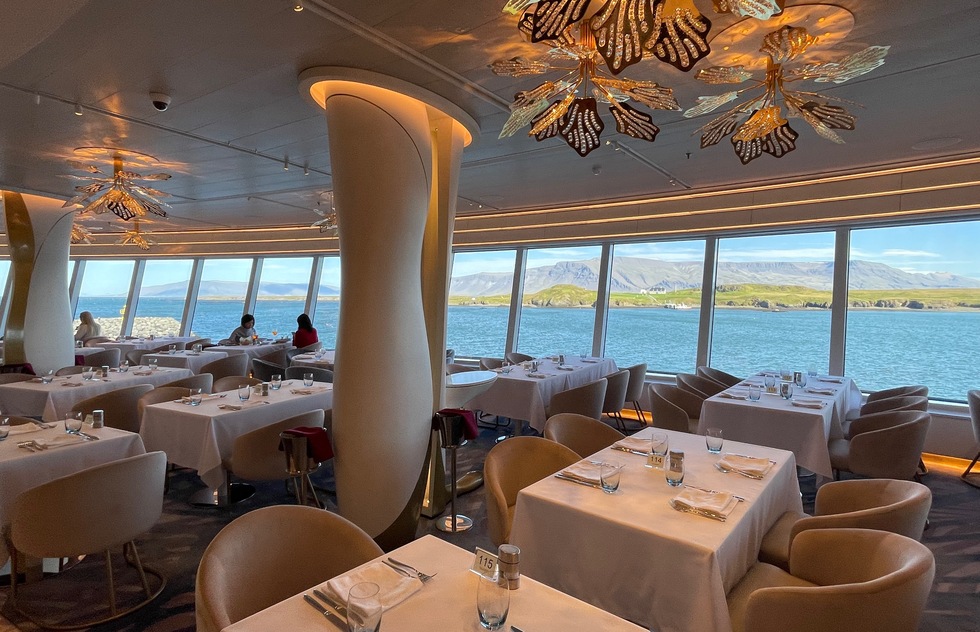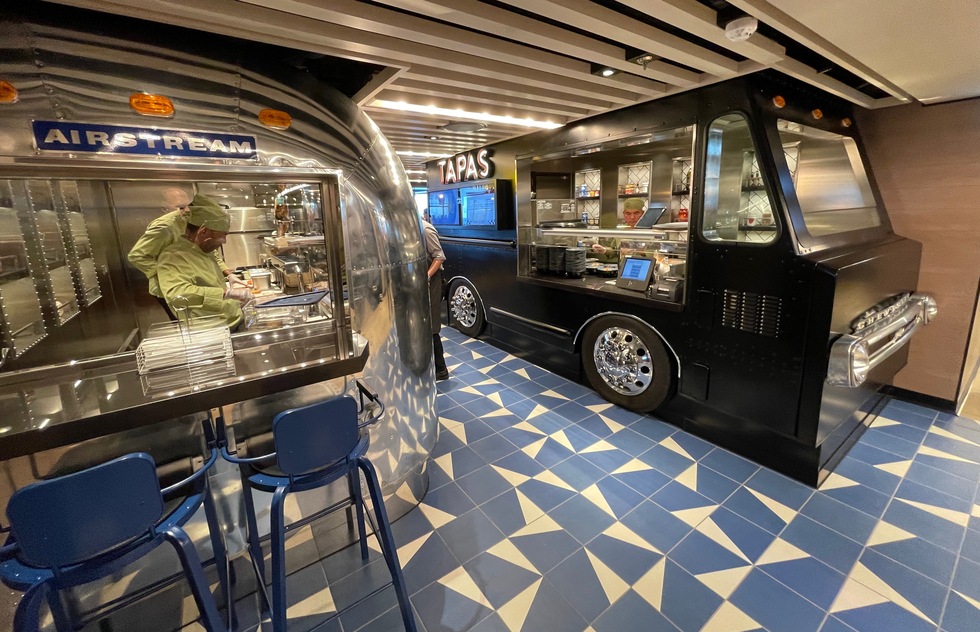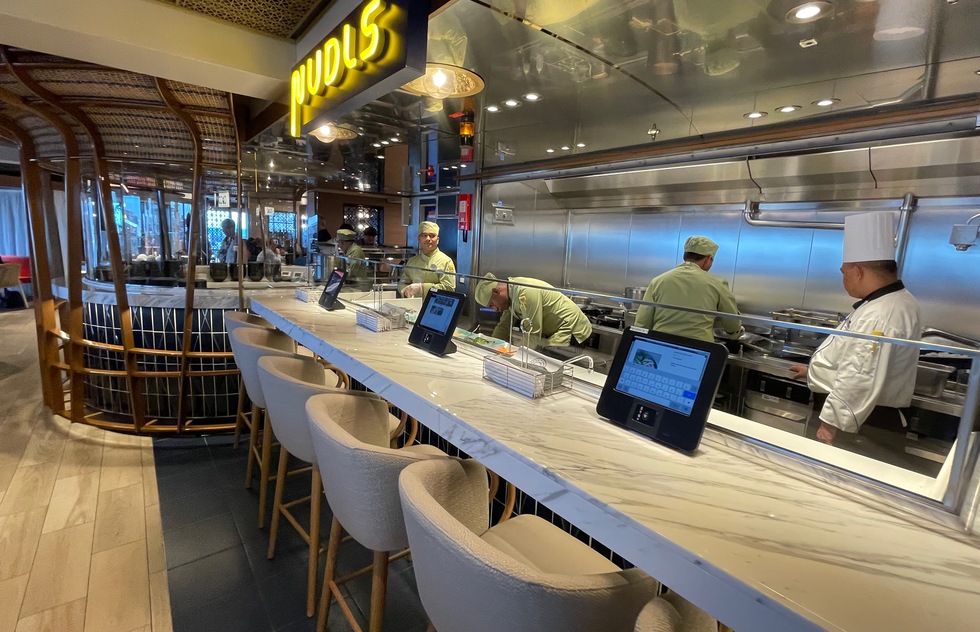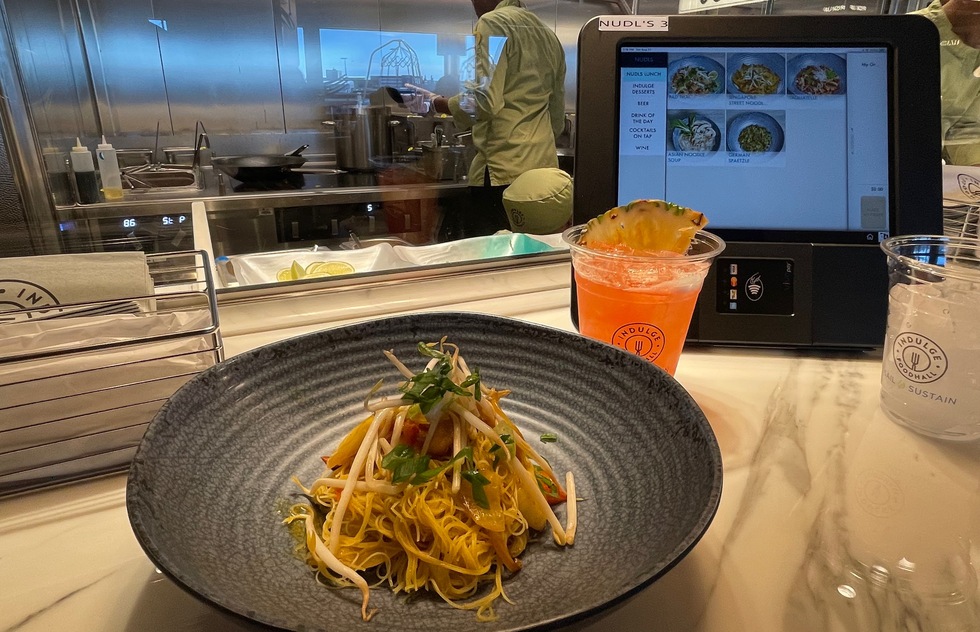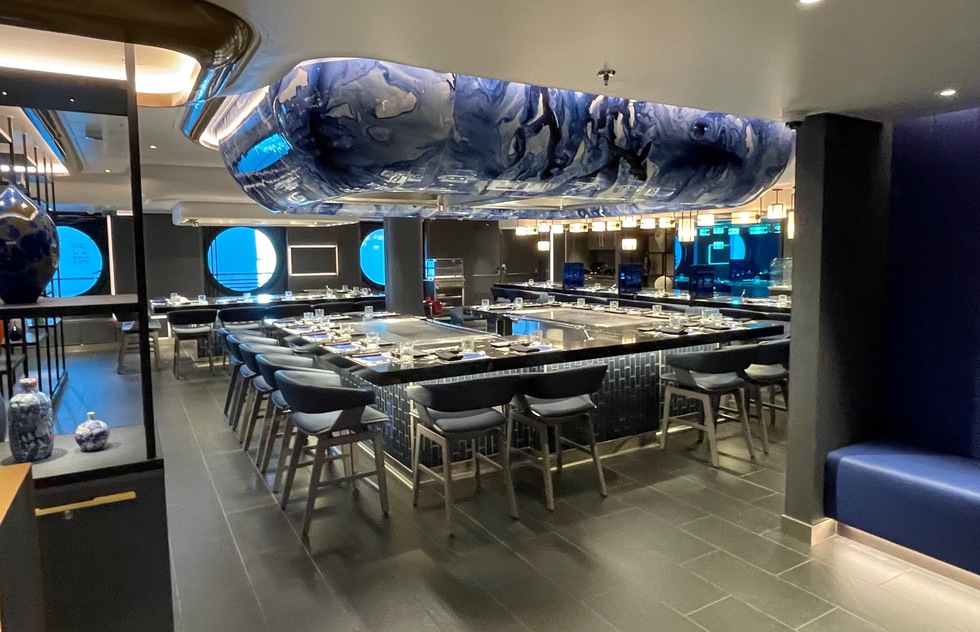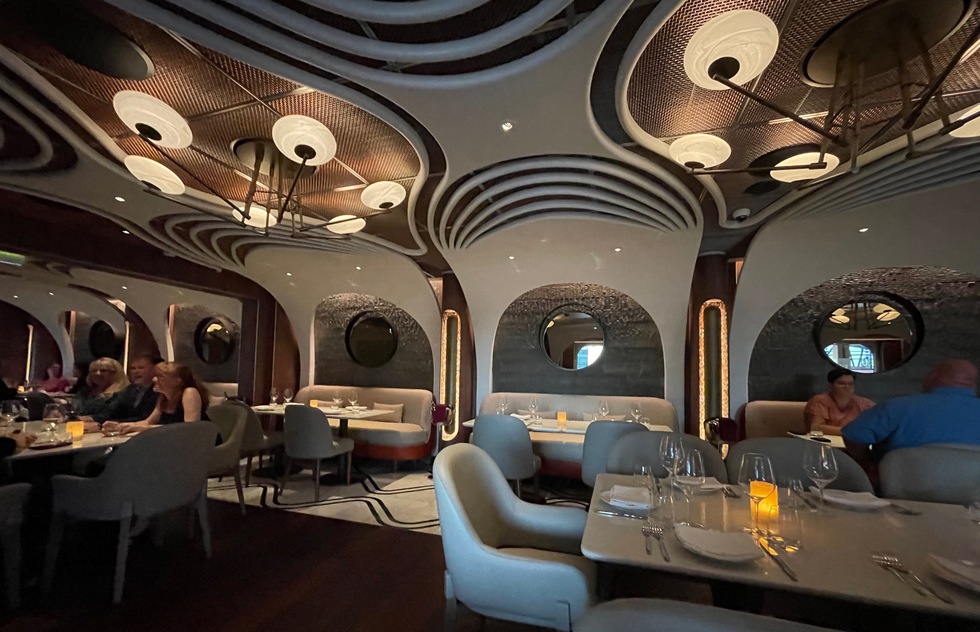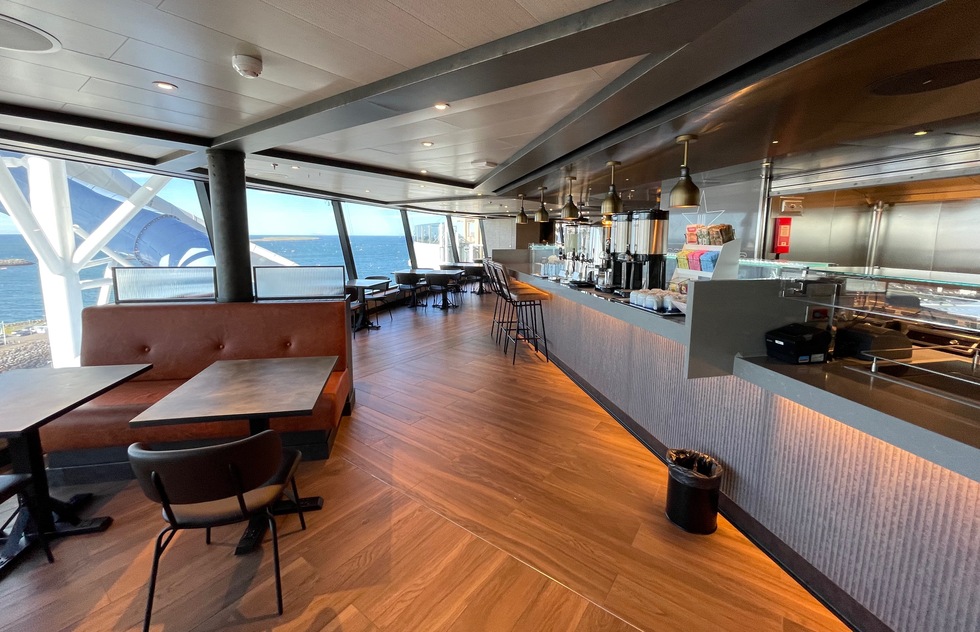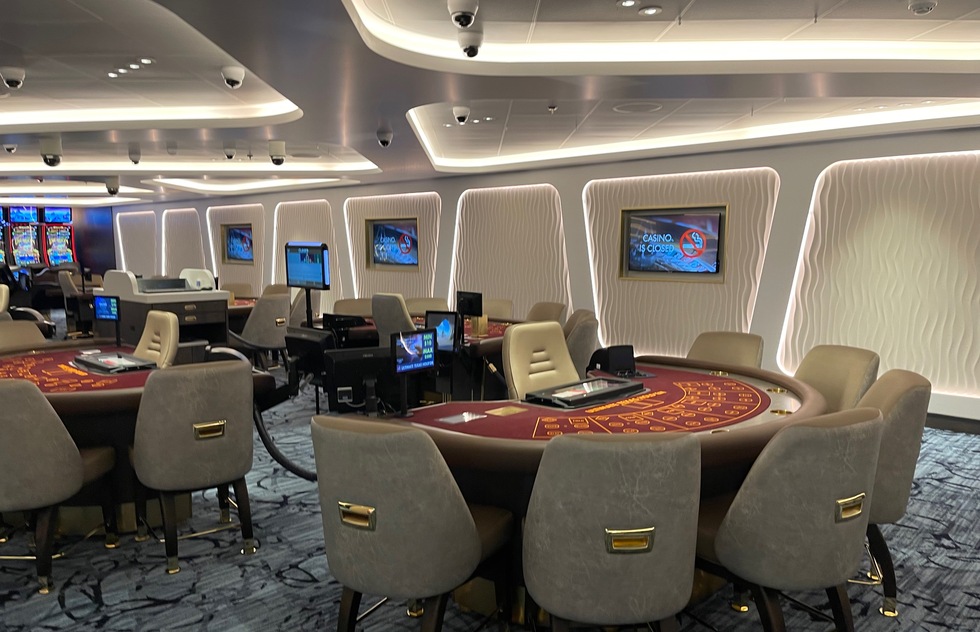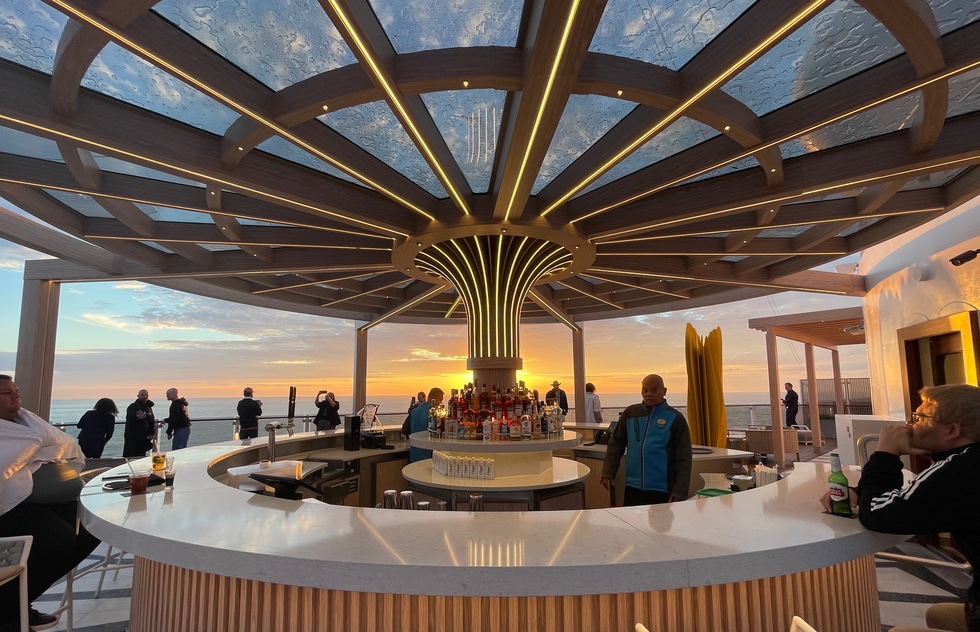Norwegian Prima Review: Real Photos, Plus Real Tips for the Ship's Pitfalls
By Jason CochranThe Norwegian Prima began sailing in the summer of 2022 as the newest style of vessel in Norwegian Cruise Line's fleet. In time, this ship's style will dominate NCL's newest offerings—there are five more versions of the Prima in the pipeline, starting with the Norwegian Viva in 2023, to be followed by four additional iterations through 2027.
NCL's Prima Class differs in a few ways from the previous class of ship, Breakaway Plus, of which the Encore, Joy, Bliss, and Escape are members (click any of those names to see our photo galleries on those vessels).
For starters, the Prima class, which can accommodate about 3,100 passengers (if fully booked at double occupancy), is a little smaller than its immediate predecessors, which can carry about 4,000 passengers per ship. That downsizing, and a slight but barely noticeable reduction in ship size, is projected by NCL execs to allow the new ships to call on smaller ports worldwide (such as Reykjavik, pictured above, where the ship was christened by pop star Katy Perry). That should open up some new opportunities on itineraries.
Norwegian Prima:
Passengers: 3,099 (double occupancy)
Crew: 1,506
Launched: 2022
Size: 143,535 gross tons, 965 feet long, 133 feet wide
Speed: 23.2 knots
Booking: 866/234-7350; ncl.com
While size and passenger density have been reduced on Prima, activities and restaurant choices were increased. Ostensibly, the shift is intended to offer customers more choice—but does that intention work out in practice? Are the changes to the core NCL cruise experience represented by the Prima class right for you?
At the invitation of the cruise line, we sailed on the inaugural run of the Norwegian Prima so we could appraise this new vacation product. Wherever possible, we took our own photographs so you can see exactly what things actually look like rather than their ideal depictions in promo images. In a few cases where access was not possible, we had to use the cruise line's highly edited renderings like the aerial view above.
First stop: the cabins. With 946 units aboard, the Balcony stateroom pictured here is the most common category on the ship.
Balcony units range from 230 to 270 square feet (21–25 sq. m) in size, but those numbers don't mean much until you're inside. We were surprised at how spacious this category was. There's enough room in front of that sofa for morning exercises.
A single USB charging port is built into the base of each of the two lamps flanking the bed area.
Behind the curtain, there's an outdoor balcony with two chairs and a small table.
The desk area has a good variety of charging points, from European-style to U.S.-style and including another USB. Don't pack a hair dryer—there's one hanging underneath. A cube mini fridge for your use sits behind the panel to the left.
It's not possible to stream from your device to your stateroom television.
Frommer's advice: Because there are only a few outlets of each type, you'll probably want to bring some adapters to maximize your charging options.
The storage areas in the standard staterooms are located in the entry corridor, and they're not as plush as the décor implies. On the right side of the closet, which is accessed by two sliding doors, you'll find a safe and a few pullout platforms beneath clothes hangers.
The other half of the closet, next to space for luggage, contains more clothes hangers but no traditional drawers. Instead, there are two slide-out metal-wire baskets, like an upscale version of the milk crates kindergartners use to store their crafts.
Also missing: robes and slippers. Those are supplied to passengers who book the most expensive cabins in the ship's high-priced private area, The Haven, but not, apparently, to the majority of guests. The omission could make going to the pool tricky, because passengers will have to return to their staterooms with only towels (free to borrow) over their swimsuits. Although the Norwegian Prima is marketed as a borderline-luxury ship, the lack of robes and slippers makes the main stateroom category decidedly less convenient than what you find in luxury hotels on land.
Frommer's advice: Pack your own robe and slippers for the Norwegian Prima. If you plan to visit the spa, make sure those slippers are waterproof (the spa doesn't supply them, either).
The bathrooms are large for a cruise ship, so that's a plus. No tubs, but the excellent showerheads can change the pulse and spray of the water (always strong, always available hot) with the push of a button.
In the standard class of cabins, shampoo and soap are also dispensed by pushing buttons, via containers attached to the wall. We're glad the line has gotten rid of single-use plastics, but it would have been a bit more luxurious to know what brand of toiletries we're using.
The most affordable staterooms on the Prima are Inside Cabins. There are 310 of those on board, and they're noticeably smaller (160–255 sq. ft./15–24 sq. m.) than the Balcony unit we've just seen, although you get the same closets and desk.
We've got to hand it to Norwegian. More than a decade ago, the company made a commitment to making single-occupancy staterooms a standard category on ships, and that holds true on Prima. There are 73 single-occupancy Studios on board (a rendering of one is pictured above). If you book a Studio, you don't have to pay extra for a single supplement. None of the single staterooms come with windows that face the sea, but solo passengers do get exclusive access to a small lounge with snacks.
For the Prima class of ships, Norwegian is putting more juice into its Haven category of staterooms, which are substantially larger and cost substantially more than typical cabins and come with luxury trimmings like 24-hour butler service (a rendering of a Haven cabin is pictured above).
The Prima carries 107 of these Haven suites on board, all of them ensconced in their own private area of the ship—accessed by private elevators, privy to a private pool deck, private bar, and private restaurant—and all of them with private balconies encircling the back end of the Prima. On previous Norwegian ships, The Haven tended to be at the front of the vessel.
NCL has promised "upgraded heating, ventilation and air conditioning systems," and this in-room thermostat, positioned by the main door, is a result. We found the cooling system was fairly responsive, and the Quick Cool button really did serve to chill the room speedily after a warm afternoon.
While staterooms are equipped with a key card–operated power system, on our cruise our assigned cabin steward left a spare card in the slot at all times, so that energy-saving system was never in practice. However, our steward always made sure to close the balcony curtains whenever we left the room, which surely played a role in easing the energy strain of keeping things cool.
Very useful: "Do Not Disturb" and "Make Up Room" signal buttons are built into the thermostat, so you don't have to hang signs on your door.
Now let's look at the rest of the ship.
This attractive area is the Penrose Atrium, the three-level heart of the ship that spans decks 6, 7, and 8. The port (left) side looks out at the sea through wide windows. In this space you'll find a variety of staples: a Starbucks; two bars (one of them dedicated to whiskies); the desks for guest services, shore excursions, and Wi-Fi info; entries to the casino and a few restaurants; and a handful of shops for sundries, clothing, booze and candy, and Prima merch. There's a lot going on here all the time.
Frommer's advice: Norwegian's standard Wi-Fi package ($30/day) expressly blocks TikTok and any video steraming, including clips as small as Twitter GIFs—so if you were planning on checking your security cameras back home, the basic package won't permit it. Instead, you have to get the most expensive package ($40/day).
The Prima is not the first Norwegian ship to have a go-kart track on the top decks—that was the Norwegian Joy in 2017—but the concept has certainly ballooned to newly giant proportions. Now this amenity, named the Prima Speedway ($15 for 8 minutes; weekly pass $199), has taken over large expanse of the top deck, crowning the middle of the ship with a three-level crown of track. Cars reach top speeds of 25 mph (40 km/hour).
If go-karts are your thing, it's a real blast to roar around the top decks with nothing but the ocean on the horizon (you're protected from flipping overboard). But if you're not into go-karts, you might find the intrusion annoying. There were several times when we were on the balcony of our 15th-floor stateroom but could still hear the snarling of the vehicles on the racecourse four decks above.
Frommer's advice: If you want to use the Speedway, you must pack closed-toed shoes. To avoid hearing the noise of the Speedway above you when you're in your cabin, reserve a stateroom at the front or back of the ship.
Prima Speedway minimum height: 55 inches (1.4 m); maximum weight: 265 lbs. (120 kg)
On the port side of Deck 18, The Bull's Eye ($40 for 50 mins for up to 6 people) is a dartboard game with a computerized tallying system. It's fun for group competition, and you'll find the Prima Speedway Bar around the corner for lubrication. There are a few dartboard stations you can reserve.
Frommer's advice: Steer clear on windy or rainy days, because the exposed location makes this spot susceptible to bad ocean weather.
Next to The Bull's Eye, the tricked-out miniature golf course Tee Time ($10) keeps track of your score via tech hidden in your ball. On our cruise, the course didn't work very well; design flaws trapped our ball in non-guest areas, and on other holes, the screens were not responsive. But once those glitches are worked out, this should be a fun diversion. If you're exceptionally skilled, you might even win a prize.
Frommer's advice: Like The Bull's Eye, Tee Time is an amenity that is difficult to use in bad weather. The course's location on the top deck makes it susceptible to ocean winds, so go while the ship is in port and on calm days.
On the other side of Deck 18 from The Bull's Eye and Tee Time, The Stadium is where you find a bunch of free games such as pickleball, table shuffleboard, ping-pong, Foosball, and a no-beer-required version of beer pong. Although the area is technically topside, it's also under the Speedway track.
Who needs elevators? From Deck 18, you can hail the quickest way down to Deck 8: the dry body slides of The Drop (pictured above) and The Rush. Both are free.
While the two entwined tubes of The Rush work like standard water slides—to kick things off, you propel yourself down—The Drop begins in a capsule with a trap door that triggers after a nerve-rattling countdown. Despite that terrifying start, neither The Drop nor The Rush are especially fast rides because you descend on a fabric raft that protects you from friction burns and slows you down. Still, neither slide is ideal for claustrophobes.
The Drop and The Rush minimum height: 48 inches (1.22 m); maximum weight 330 lbs. (149 kg)
Frommer's advice: Unless you like the idea of a metal body slide tube passing through your room's balcony, watch out for staterooms marked as "partially obstructed."
The one true water slide on board is The Wave (no charge), on which you ride an inner tube down a three-story chute into a fan-shaped basin that rocks you back and forth before spitting you back out.
The inner tubes are hoisted mechanically up to the starting point so you won't have to carry them.
With all those diversions jamming the upper levels, there isn't much space left over for pools.
This is the Pool Deck, located alongside The Wave on Deck 17. As you can see, the space is not huge. There are two small infinity pools on either side. If you can't find a place to relax here, go wandering and you'll find some additional places to lay out or sit that aren't near a pool, and the Sun Deck on Deck 18 has a small splash pool for young children.
But after infrastructure like the Speedway was given the most topside real estate, this is the swimming area Norwegian was able to squeeze into the midship territory on the sunny decks.
Norwegian would probably prefer that you pay extra for access to this space: Vibe Beach Club, near the back of Deck 17. It's the pool deck you need a ticket for.
Reserved for adults 18 and over and not as susceptible to shadows as the main Pool Deck, Vibe costs $99 a day or $209 for a week on most cruises. A portion of the fee includes a credit for drinks. You can't book ahead—you have to get passes for Vibe at Guest Services when you first board the ship. Yes, passes do usually sell out fast.
The back end of the Prima past this area is reserved for the suite-only guests of The Haven. Between Vibe and The Haven, a huge chunk of prime real estate on the sunniest deck has been roped off for premium-paying passengers. That's where Norwegian's innovation attention is increasingly focused. If you were hoping for a ship that's replete with rambling pool decks for piña coladas and swimsuit ogling, the Prima isn't it.
There are two more small Infinity Pools on Deck 8, found between the landing pads of the body slides and the complimentary Indulge food court (which we'll get to soon). But don't rely on these for sunbathing—because they're situated low on the sides of the ship, shadows predominate; remember that most of the time, only one side of the ship is in the sun.
Those Deck 8 infinity pools are part of Ocean Boulevard, a dedicated outdoor space that loops all the way around the ship.
In the evening the area is beautifully lit for nighttime promenades, and you can use one of the many built-in, long-distance binoculars for spotting details in the distance. The walkway is fronted by the outdoor sections of a few restaurants with indoor dining rooms, expanding (in good weather, anyway) the available seating space.
Joggers beware: Although the pathway of Deck 8 technically goes all around the circumference of the Prima (sorry, wannabe Kates and Leos, but the tip of the ship's prow is off-limits), there are some tight squeezes that make the circuit tough for exercise runs.
Frommer's advice: If you plan to jog on the Prima, wake up early, before Deck 8 gets busy.
One improvement for the Prima: Galaxy Pavilion ($8 à la carte, $29 for a 1-hour unlimited package; weekly pass $199) is in a space without windows, and the darkness heightens the experience. The ship's updated version of an arcade substitutes old-fashioned pinball machines and Pac-Man with a large selection of virtual reality games and motion simulators. The Prima also has its own escape room ($15/person) attached to Galaxy Pavilion.
There's lots of technology that could malfunction in this area—a few of the attractions weren't working during our cruise—but that risk seems to have been counterbalanced by filling the space with a lot of additional options.
Compared to other Norwegian ships, there have been plenty of of changes to the design of the main performance venue, here called the Prima Theater & Club. Like an ultra-engineered version of your high school auditorium, it can be adapted to perform different functions depending on the time of day.
In the morning, the space can be configured as a lecture hall, but by evening the seating and sound baffles can be rearranged in a 725-seat configuration for live performances such as Summer: The Donna Summer Musical or Noise Boys.
But you won't find Broadway- or Vegas-style shows every night. With Prima, Norwegian takes a step back from traditional stage-based entertainment and invests more in alternative attractions. The cruise line signed a deal with TV's Fremantle Media, giving Norwegian the rights to a slate of programming in a crowd-pleasing new format: game shows at sea.
On our cruise, we saw the new The Price is Right LIVE on NCL (real prizes are awarded, which is why we can only show you this non-spoiler image). Audiences ate it up, cheering and screaming louder than we've ever heard during any cruise's besquined musical revue or comedy show. Press Your Luck and Beat the Clock get live versions, too, and the main seating floor can retract to create more performance space, which is also used for an officially sanctioned version of Supermarket Sweep.
Frommer's advice: Hot shows mean hot tickets—this is another thing you need to reserve as soon as you get on board. If you're shut out, the cruise line's official smartphone app now maintains a virtual queue that releases tickets from no-shows just before curtain time (although there's not a curtain anymore; it's a vast and expensive-looking video wall).
They named it the Prima Theater & Club for a reason: After showtimes, the orchestra seats are cleared away, the multi-ring chandelier telescopes downward and comes alive with lighting, banquettes materialize, and what was once a theatre transforms into a huge three-level nightclub spanning decks 6, 7, and 8.
Prima has small, dedicated spaces on Deck 7 for stand-up comedy (The Improv at Sea) and for sing-along hits (Syd Norman's Pour House), but there's no other dedicated dance hall on board—and with a space this big and elaborate, no other ones are needed.
Prima's Mandara Spa is 22% larger than the spa on NCL's previous ship, the Encore—as we said, part of Norwegian's strategy for the new class of ships is to supply more outlets for extra charges. This facility is laden with stuff you don't see on many ships: eight thermal offerings including a salt and steam room, infrared sauna, Finnish sauna, charcoal sauna, and ice room. The central feature of the thermal suite is these pools beneath a two-story waterfall (pictured here in a rendering—the pools were always full of guests on our cruise).
The spa has 20 treatment rooms for à la carte offerings like acupuncture, Zero Gravity Wellness massage, a Flotation Salt Pool, and automated "Gharieni Wellmassage5D beds" that cost $12,000 apiece to install. This is also the area where the ship's hair salon and barber can be found.
The ship books 28 Balcony staterooms that come with special access to the spa. Otherwise, guests gain access when the book a treatment, and day passes cost about $100 a day.
Considering so much attention was lavished on designing the spa, we would have hoped more attention had been paid to the details. The locker rooms are so tiny that disrobing guests can't help but bump into each other, and no slippers are supplied despite the hygiene and safety concerns of walking through the thermal suite and ice room barefooted.
The spa's relaxation lounge (pictured in a rendering), positioned at the front of the ship, will give you 270-degree views of the ocean, but when we tried using the lounge, a relentless thump-thump-thump noise vibrated the air, giving us the first headache we ever got by going to a spa.
It was so annoying that we got dressed and went upstairs a level to see what could have been causing such a disruption in the spa's most peaceful area.
The treadmills of the Fitness Center are directly above the calm oasis of the spa's relaxation room, and the heavy footfall causes disruptive vibrations.
That collision is an unfortunate design flaw. The Fitness Center, while very well equipped for a range of workout regimes, is a little cramped. One cruise guest told us that when she took a class that required her to lift a weight ball over her head, the room's ceiling was too low to complete the movement; the session leader put everyone on their knees first.
Frommer's advice: Avoid the spa's relaxation lounge during peak hours, when people are more likely to be jogging in the Fitness Center. (The spa's individual treatment rooms are not located beneath the Fitness Center.)
There are bars wherever you turn on the ship; drinking is a primary activity on board. One of the most interesting cocktail destinations is Metropolitan, located along a corridor among the dining-and-entertainment venues on Deck 8. Here, surplus food is turned into ingredients for inventive quaffs—usually, that's achieved by reducing extra food into a sugary liqueur.
This way, processed banana peels join sustainably made rum, walnut bitters, and orange bitters to become the Primadonna. Leftover strawberries and orange peels become La Madrina, which is like a sweeter Moscow mule. And discarded croissants are turned into syrup and mixed with rum, Cointreau, and lime juice to become the Croissant Mai-Tai.
The results of this sustainability won't put you off. For each of the recipes we tried, we'd never have detected the orphaned food items unless someone told us they were part of the mix. Most of the drinks are pretty sweet—but then, so are a lot of popular vacation beverages served on cruise ships. Metropolitan's cocktails cost $12 each.
If you like your cocktails more straightforward, the Observation Lounge, high up at the front of the ship on Deck 17, has wraparound views and plenty of air-conditioned places to sit. This is a popular spot for people who have reading or work to do.
Now on to the food.
Here's where Prima planning can get hard. Although there are 15 food venues available to standard guests, not all are included in your cruise fare. There are no set mealtimes for free dining; you eat where and when you want.
The largest space for complimentary dining is Hudson's (458 seats), which, unlike most main dining rooms on cruise ships, has a menu that doesn't change from day to day. If you like what's being served, you're going to love coming here again and again; if you don't, you have 10 other places to seek something else. We happened to like the dignified setting and panoramic views at Hudson's—the Smashburger at lunch was delicious, and the Thai steak and noodle salad had a pleasant zip.
Nearby, The Commodore Room (228 seats) is a similarly styled tablecloth restaurant that is also free for any guest to use.
Every cruise ship has a standard buffet that comes free with your passage. This one is Surfside Cafe & Grill (seats: 180 indoor, 58 outdoor), adjoining the main pool. It's not as large as the buffet on many ships, taking up only a small portion of the port side of the ship. (The corresponding space on the starboard side is occupied by two restaurants that require extra fees and reservations.)
The range of offerings was adequate, although breakfast caters only to passengers with Western palates—the morning menu is heavy on eggs and bread. Asia-derived choices such as congee and fried rice, while served on competitors such as Disney Cruise Line, were not available on our Prima sailing.
Pizza, baked in diners' view inside a wide-mouth gas oven, made evening appearances, but wasn't served during the day. In fact, Prima has no all-day pizzeria options. (There are classy versions of pizza in the up-charged Onda by Scarpetta restaurant on Deck 8.) A pizza scarcity is hardly a deal-breaker for us, but we know there are some people who insist on a nonstop daily flow of pie on their vacations.
On the plus side, Surfside is where you'll find that other cruise ship mainstay: the self-serve soft ice cream machine. You know you'll visit it more than the fitness center.
Down on Deck 8, The Local Bar & Grill (seats: 120 indoor, 32 outdoor) offers complimentary pub-style food that's popular but on the heavy side: burgers, wings, fried fish, Reubens.
The fifth and last restaurant that every passenger can visit for free is the most novel of the bunch.
Indulge Food Hall (Deck 8) is set up like a food court at the mall—you visit different stations for different cuisines.
There are 11 stations under the Indulge umbrella, and most of them are self-explanatory: Coco’s (sweets), Garden Kitchen, Just Desserts, Just Ice Cream, The Latin Quarter, Nudls, Q Texas Smokehouse, Seaside Rotisserie, Tamara (Indian), and Starbucks.
If you seat yourself at a standard table, you'll use a tablet to order from multiple venues and the dishes will be delivered, but if you sit at a counter, you'll order from that location's particular menu.
Of the bunch, Tamara, the counter for Indian dishes, seemed to attract the most repeat interest from fellow passengers over the length of our cruise, and with good reason: Selections (which changed between lunch and dinner) were flavorful, not afraid to venture into spicy territory, and provided a welcome break from the generally mainstream American choices served at the other free restaurants. Our favorites at Tamara: the chicken korma and the short rib dosa.
We also loved Nudls (pictured above), which prepares everything from pad thai to a mild Singapore street noodle to Geman pesto spaetzle.
Portion sizes throughout Indulge Food Hall are modest, but guests can order as many helpings as they want.
During the opening sailing of the Prima, we noticed a trend: Perhaps because of its variety and fun theming, Indulge Food Hall was sometimes more popular than it could easily handle. A central problem was that although there are 220 indoor seats, another 120 seats on the deck outside are only available in ideal weather.
Frommer's advice: If you can't find a table at Indulge Food Hall, schedule your meals for early or late during operating hours, or sit at a counter instead.
Once you have exhausted the complimentary restaurants, you'll have to pay a supplement fee per meal as well as secure a reservation to try any of the remaining nine dining venues. Reservations may prove to be the most challenging part—these speciality choices have dramatically less seating than the free ones.
Hasuki (pictured above), a hibachi showplace for Japanese cuisine with flair, seats just 62. Across the corridor, fine sushi is served at Nama (37 seats). Around the corner at Le Bistro, an 88-seat dining room crammed with arresting floor-to-ceiling chandeliers, the menu leans toward rich French classics.
Frommer's advice: If you know you want to sample the specialty restaurants, buy a Specialty Dining Package (SDP) ahead of time. That will add roughly $25 to $45 per meal in additional costs. Keep in mind, though, that as more guests purchase packages, the more reservations you'll need—book your seats as soon as you can.
On Deck 8—one deck above the specialty restaurants mentioned above—passengers can opt for successful upscale Mexican at Los Lobos (seats: 70 indoor, 42 outdoor) and high-minded Italian at the elegant Onda by Scarpetta (seats: 81 indoor, 40 outdoor), pictured above. On Deck 6, you have Cagney's Steakhouse (125 seats) as a pay-extra option.
Happily, the food across the ship is good, so if you never spring for a surcharged restaurant, you won't be eating slop. At the specialty restaurants, though, you can detect a difference in creativity of preparation, ingredient quality, and plating finesse.
Remember that wherever outdoor seats are listed, they will only be used in good weather. Depending on your cruise, that may drastically cut down on availability. In fact, capacity issues could lie ahead, as the ship is scheduled to sail in the chilly North Sea multiple times in 2023 and 2024.
Finally, up on Deck 17, the additional-fee restaurants are Palomar for seafood (seats: 75 indoor, 56 outdoor) and the popular Food Republic (pictured above with a view of The Rush tubes; 70 seats) for shared plates bearing riffs on global street food such as pork belly bao and firecracker shrimp.
Frommer's advice: By carving the ship into more intimate spaces, Norwegian put increased pressure on the space provided. Most of the speciality restaurants are so tiny that availability threatens to be an issue, and at several of them the outdoor seating will not be opened if the weather turns out to be poor, so make your reservations at the earliest opportunity.
Yes, down on Deck 6 there's a casino. It has table games, lots of slots, a bar, and the only place they'll let you smoke. There's also a small humidor nearby for cigar puffers.
Happily, there's a price guarantee in the shops—use it to avoid getting gouged.
All in all, Norwegian Prima is a comfortable, handsome ship with tons of things to see and do. Although we found the standard staterooms were generally superior to those of many other lines, their trappings promise a sense of luxury that the amenities don't meet—pack that robe and those slippers! But it would be foolish to argue that the company hasn't equipped this ship with more options and amenities than you'll probably be able to use.
The Prima simply offers a better product to those who are able to pay extra. The more restaurants and activities that Norwegian's designers stuff into ships, the less deck space for free pool days there will be. There will also be more opportunities for disappointment for guests who either can't afford to keep paying up-charge fees or don't have the know-how or energy to keep working to score reservations.
If you sail aboard the Norwegian Prima, you'll be at the cutting edge of atmosphere and amenities in mass-appeal cruising, but you'll also have to learn how to secure your place in dwindling public spaces and how to jockey for passes at Guest Services to make sure your schedule remains full of the things you came to enjoy.
And if you were banking on spending lots of time basking on expansive pool decks, the restricted availability of those topside spaces could mean the Prima is not the ship for you.
True luxury cruise lines take care of everything for you—true luxury is all-inclusive. Norwegian is all about extra charges. But as long as you know that sailing the glittering Prima will require some extra outlay and advance elbow grease from you, you'll find it a busy addition to the vacation landscape.
Pictured above: Vibe Beach Club at sunset
In 2022, early 2023, and winter of 2023–24, Norwegian Prima will sail mostly to the Caribbean on 7-night itineraries from Port Canaveral near Orlando; Miami; Galveston, Texas; and New York City.
In summer 2023 and summer 2024, the ship will operate 10- and 11-day one-way runs between Reykjavik, Iceland, and Southampton, England.



